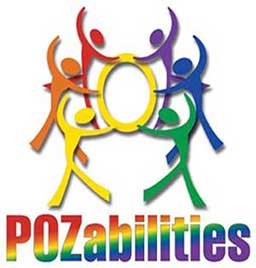NIH NIAID Shaping the Next Era of HIV Therapeutics and Care
One of the key challenges I raise when I have the opportunity to speak with the HIV research community is a seemingly simple question; “So What?”. Quite often, the end of the road for research initiatives is the publishing of the results of the work in some often obscure journal or conference rather than seeing it through to some clinical implementation or a follow on trial to develop a practical application for the work that has some benefit to those of use living with HIV. My challenge is for researchers to look at their work from the point of view of a Person Living With HIV (PLWH) and as the “So What?” question and try to find a way to direct the knowledge they may have gained towards something that has an impact on the HIV community.
According to a recent NIH surveillance report, In 2020 older persons with HIV (OPWH) represented half of all persons living with HIV in the U.S. Current estimates predict that by 2030, nearly 70% of persons with HIV in the U.S. will be over the age of 50. This trend limits the amount of time that new treatments, knowledge or lifestyle changes can have a meaningful impact for PLWH. We need to remember that perfection is the enemy of good enough when it comes to improving quality of life for a rapidly aging community. Studies have shown that background replication of HIV that occurs even under ARV treatment with undetectable viral load drives ongoing inflammatory symptoms that appear to be related to accelerated aging in PLWH. In other words, as we get older chronologically, we age even faster biologically than people without HIV.
We need to take a lesson from our own past. Early in the epidemic, activist persuaded the research and pharma industry to establish Early Access Programs and compassionate use protocols that got potentially life saving treatments to PLWH who were dying from a disease with no cure or treatment options. Many of us are still around because of this. These same programs were key to getting treatments and vaccines to people during the COVID pandemic as well. It’s time for the HIV activist community to demand more rapid development of new approaches to improving quality of life for aging PLWH while we can still benefit from them.
While attending the International Workshop on Aging and HIV in Washington, DC last month I had the opportunity to raise the question to a room full of young researchers, their mentors and activists during a session sponsored by the NIH Office of AIDS Research (OAR) and the National Institute on Mental Health. The question was met by stunned silence from the panel but led to a number of subsequent discussions with researchers who hadn’t really considered what comes next after they publish. It also led to a good interaction with David Chang, PH.D, a senior Science Advisor with the OAR. He indicated that their office was very interested in these issues and were actively looking at how to move from research to implementation. Along these lines I can across the following article from their office that I find very encouraging.
https://www.niaid.nih.gov/news-events/shaping-hiv-therapeutics-and-care
The blog indicates that they are looking at the whole person rather than just the HIV infection to “ensure that person-centered HIV care incorporates health-related quality of life metrics alongside standard HIV monitoring and management in our clinical trials”. This includes ways to diagnose and treat aging related changes and infections which may occur earlier in PLWH in order to improve quality of life.
I find this viewpoint refreshing and is a step in the right direction. What do you think?

